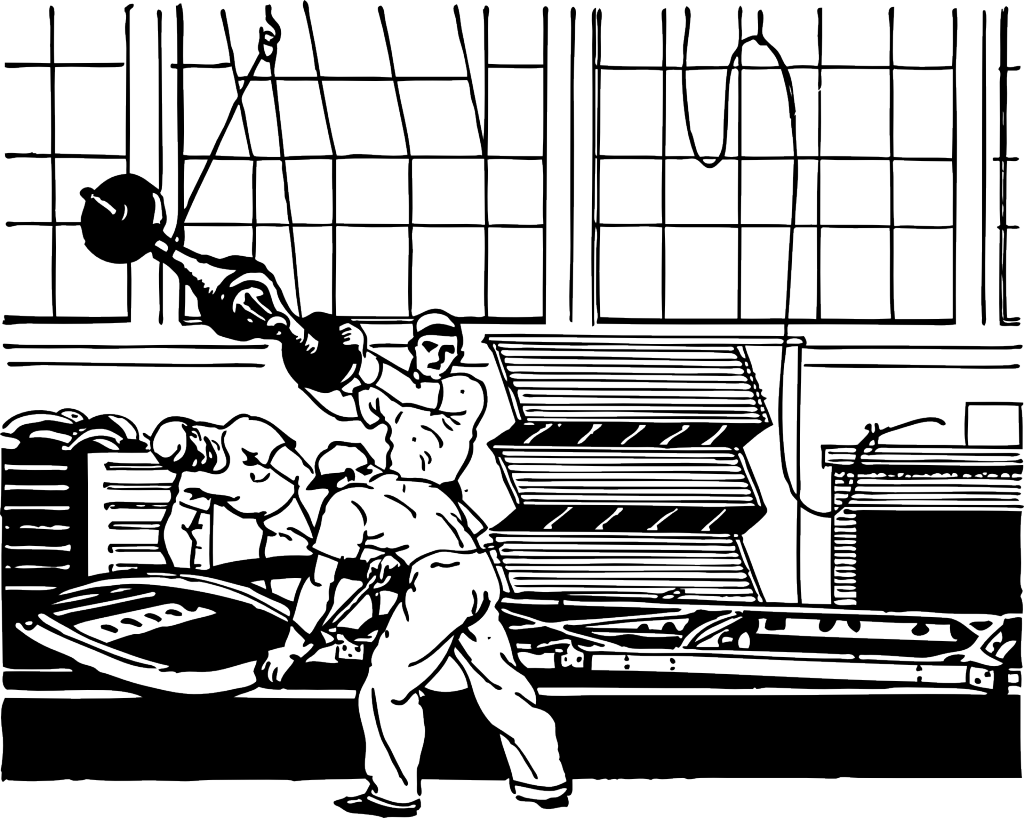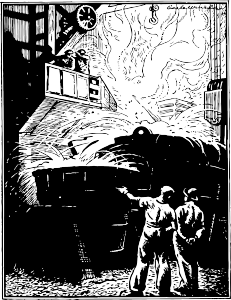 A number of serious workplace accidents in recent months has led to a building concern over the safety of production in China. These unfortunate incidents added pressure to the Chinese authorities to update the Safe Production Law, which was enacted in November 2002. The law was finally revised on 31st August, 2014, and came into effect on 1st December, 2014. Below, Carlo D’Andrea of D’Andrea & Partners and Chair of the Legal and Competition Working Group in Shanghai—who recently held a seminar to raise awareness of the updated law—highlights the key changes in the law.
A number of serious workplace accidents in recent months has led to a building concern over the safety of production in China. These unfortunate incidents added pressure to the Chinese authorities to update the Safe Production Law, which was enacted in November 2002. The law was finally revised on 31st August, 2014, and came into effect on 1st December, 2014. Below, Carlo D’Andrea of D’Andrea & Partners and Chair of the Legal and Competition Working Group in Shanghai—who recently held a seminar to raise awareness of the updated law—highlights the key changes in the law.
The new Safe Production Law places more emphasis on workplace safety by increasing the penalties that can be handed down to negligent employers and empowering enforcement authorities.
The main modifications of the Safe Production Law are as follows:
More power to Labour Unions (Article 7)
Trade unions shall, in accordance with the law, supervise work safety. If a production or business unit of a company wishes to formulate or modify regulations related to safety production, unions will have the right to comment.
Increased Penalties (Section 6)
Where the principal leading member of a production or business unit fails to perform his/her duty related to work safety as stipulated by the law, he/she shall be fined not less than RMB 5,000 but no more than RMB 20,000. Fines for illegal performance by the organisation in charge of assessment, authentication, testing and inspection related to work safety of the production or business unit are also increased.
Empowerment of Authorities (Article 64)
The new law entitles authorities to stop electricity, water and heat power supplies to any company that refuses an order to stop production or construction that is deemed to be potentially unsafe.
Blacklist (Article 72)
The Administration of Work Safety Supervision will keep records of any companies that have violated production safety according to the law. In serious cases these records will be made public.
Work-related injuries
It is important that employees clearly understand under what circumstances an injury can be deemed to be work-related.
According to Article 14 of the Regulation on Work-Related Injury Insurances an employee shall be determined as having a work-related injury if:
- He/she is injured in an accident at work during working hours in the workplace;
- He/she is injured in an accident while engaging in preparatory or finishing-up work related to work before or after working hours in the workplace;
- He/she is injured by violence or other accident in his/her performance of job duties during working hours in the workplace;
- He/she suffers from an occupational disease;
- He/she is injured at work or is involved in an accident in any other location during work-related travel;
- He/she is injured in a motor vehicle accident while going to or returning from work; or
- He/she is in any involved in other circumstances that shall be determined as a work-related injury according to the provision of laws and administrative regulations.
According to these points, regardless of whether they took place in the workplace or not, injuries can still be deemed to be work-related.
 An occupational disease is broadly defined as any chronic ailment that occurs as a result of work or occupational activity. For special occupations, such as polishing, painting and any work related to the phosphorous chemical industry, employers shall organise health checks for any employees with potentially serious occupational hazards before beginning work, during the period of work and before leaving work.[2] If a worker has contracted a disease due to his/her working conditions, it will be deemed to be an occupational disease and will entitle the employee to work-related injury insurance funds and compensation from the employer.
An occupational disease is broadly defined as any chronic ailment that occurs as a result of work or occupational activity. For special occupations, such as polishing, painting and any work related to the phosphorous chemical industry, employers shall organise health checks for any employees with potentially serious occupational hazards before beginning work, during the period of work and before leaving work.[2] If a worker has contracted a disease due to his/her working conditions, it will be deemed to be an occupational disease and will entitle the employee to work-related injury insurance funds and compensation from the employer.
According to the Provisions of the Supreme People’s Court on Several Issues Concerning the Trial of Administrative Cases on Work-Related Injury Insurance, “going to or returning from work” is defined as a reasonable route from work to domicile or from domicile to work within a reasonable time. If, for example, someone goes grocery shopping on the way home from work, it shall be deemed as “returning from work”, which is to say, if an employee is injured while grocery shopping it may be considered a work-related injury.
Employer liabilities
In accordance with the effective laws and regulations an employer’s liability for the workplace safety is divided into three levels – civil, administrative and criminal.
- Civil
Employees who suffer work-related injuries or occupational-diseases have the right to demand compensation from units where they work, in addition to enjoying the social insurance for industrial injuries in accordance with law. The Regulation on Work-Related Injury Insurances confirms that necessary costs and compensation of the employee shall be paid from work-related injury insurance funds and the employer.
- Administrative
In accordance with Section 6 of the Safe Production Law, the principal leading member of a production or business unit where any work-related injury occurs, or which commits a violation of laws or administrative regulations, will be punished or fined by the administrative authorities.
- Criminal
If an accident involving heavy casualties occurs in a factory, directors, legal representatives or senior managers will take personal liability.
Where the facilities for operational safety of a factory, or any other enterprise or institution, fail to meet State requirements and no measures are taken to remove hidden dangers that caused the accident after a warning has been given by the departments concerned or employees of the unit, so that an accident involving heavy casualties occurs or other serious consequences ensue, there are serious consequences. According to Article 135 of the Criminal Law, the person who is directly responsible for the accident shall be sentenced to fixed-term imprisonment of not more than three years or criminal detention. If the circumstances are especially flagrant, he/she shall be sentenced to fixed-term imprisonment of not less than three years but not more than seven years.
An employer’s liability for work-related injuries is a ‘non-fault liability’, which is to say, whether the employer is found at fault for the accident or not, they are still liable to pay the necessary costs related to the injuries.
Conclusion
Employers should always ensure that safety comes first. In order to mitigate work-related accidents and related injuries to employees, employers should:
- Raise safety awareness, improve self-protection capabilities and provide regular employee training, especially for new employees;
- Implement protective measures for safe production;
- Conduct regular checks of machinery and the working environment;
- Include a section on safe working practices in the employee handbook; and
- Insure the company against work-related accidents and sign a civil liability insurance contract based on the Regulation on Work-Related Injury Insurances.
With offices in China in Shanghai, Nanjing and Zhuhai and a network of professionals around the world, D’Andrea & Partners assists European companies in China as well as Chinese companies wishing to enter the global market through the establishment of foreign-invested enterprises or by mergers and acquisitions. The team is composed of both Chinese and European professionals, many of whom have experience of legal practice outside their home country.
[1] Jilin Dehui Poultry Factory accident, 3rd June, 2013 – 21 dead; Shandong Qingdao oil pipeline blast, 22nd November, 2013 – 62 dead, 138 injured; Jiangsu Kunshan explosion, 2nd August, 2014 – 75 dead, 185 injured.
[2] In accordance with the Provisions on the Supervision and Administration of Occupational Health at Work Sites and the PRC Prevention and Control of Occupational Diseases Law.


Recent Comments